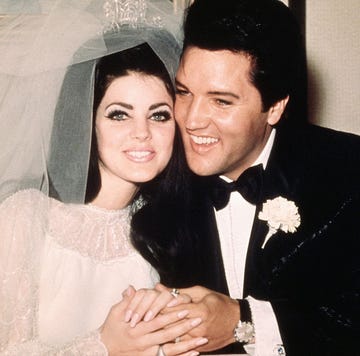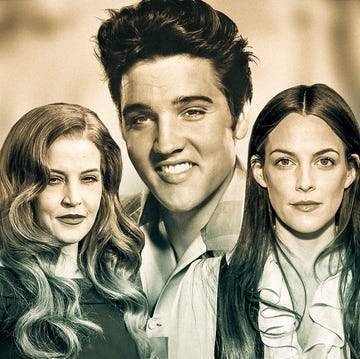Here’s what you’ll learn when you read this article:
- In the early days of genome sequencing, rock star Ozzy Osbourne allowed his genome to be analyzed.
- The intention was to determine how the heavy metal icon had survived his decades of rampant substance abuse, and better understand the early signs of his Parkinson’s disease.
- Scientists found mutations in his genes connected to alcohol consumption, and found that Osbourne had some Neanderthal ancestry.
This story is a collaboration with Popular Mechanics.
Just days before his passing on July 22, the late Ozzy Osbourne was able to see his musical legacy celebrated in a final farewell concert. The heavy metal god sat upon a throne and sang his iconic hits to an adoring crowd one final time. But the breadth of his impact on the world might be wider than many realize.
As it turns out, Osbourne, 76, also made a significant contribution to scientific research.
Nowadays, just about anyone can get their genome sequenced. In doing so, they can learn a lot about their genetic history, their biological traits, and even what diseases they might be predisposed to, but 15 years ago, genome sequencing was pretty rare. According to Osbourne’s own account in The Times of London, “only about 200 people” had their genome sequenced when he was initially approached about having his own genes analyzed.
That short list included luminaries like Nobel Prize winner James D. Watson and MacArthur Fellow Henry Louis Gates Jr. These initial sequencing efforts helped inform our early understanding of what is now a massive industry that can help people make informed decisions about their health. The hope was to add the “Prince of Darkness” to that prestigious group.
Osbourne, according to his own account, initially “didn’t like the sound of it.”
“I’m a rock star, not Brain of Britain,” he wrote in 2010. “The only Gene I know anything about is the one in Kiss.” The man who approached Osbourne with the proposition, however, retorted that the rockstar’s genes could offer something important to the scientific community and contribute to our understanding of how some people seem downright invulnerable to vices that are otherwise wildly destructive.
“...you’ve said it yourself: you’re a medical miracle. You went on a drink-and-drugs bender for 40 years. You broke your neck on a quad bike. You died twice in a chemically induced coma. You walked away from your tour bus without a scratch after it was hit by a plane. Your immune system was so compromised by your lifestyle, you got a positive HIV test for 24 hours, until they proved it was wrong. Yet here you are, alive and doing well.”
Osbourne was admittedly curious about how he’d survived such an intense lifestyle, and also hoped to get a better understanding of the “Parkinson’s-like tremor” he had begun to experience. Parkinson’s disease would ultimately plague Osbourne’s final years, reportedly causing “five years of hell” for the metal singer.
As reported at the time by MIT Technology Review, Osbourne’s blood was collected in July 2010 by the St. Louis-based company Cofactor Genomics, which handled the initial genome sequencing. That data was then sent to Knome Inc. in Cambridge to be analyzed.
In October of that year, Scientific American spoke with Knome’s director of research, Nathan Pearson, to get to the heart of their findings.
“If you think about what makes Ozzy unusual,” Pearson said in explaining their focus, “it’s that he’s a world-class musician, he has an addictive personality, he has a tremor, he’s dyslexic, he gets up very early in the morning. And many of these can be traced back to the nervous system.” When they honed in, they noticed some variants that, even in 2010, seemed to suggest, if not fully confirm, some explanation for those qualities:
“One variant involves a gene that makes CLTCL1, which is a really interesting protein. When a cell takes in things from the outside membrane, it pulls itself in like a basket to pull things in. It does this in all kinds of cells, including nerve cells. He has two copies of an unusual variant that makes a grossly different version of the protein than most people produce. Here’s a gene that’s central to how nerve cells communicate with each other, so it’s curious to us to see a grossly different protein variant. It’s thought provoking.”
As one example, Pearson pointed to alcohol dehydrogenase genes—the genes involved in breaking down the alcohol we consume. Osbourne, they found, “has an unusual variant near one of his alcohol dehydrogenase genes, ADH4, that helps regulate how much of the protein gets made.” At the time of the interview, however, they conceded they were unaware of exactly how that variant impacted the musician’s alcohol consumption specifically. That said, as far back as 2006, this gene had been known to have some impact on alcohol dependency.
As Osbourne would playfully remark in his op-ed, “Another thing Dr. Nathan found is that I’m part Neanderthal. That won’t come as much of a surprise to the missus—or various police departments around the world.”
For his part, Pearson was a bit more academic in his explanation:
“For a long time we thought that Neanderthals didn’t have any descendants today, but it turns out that Asians and Europeans have some evidence of Neanderthal lineage—like a drop in the bucket. We found a little segment on Ozzy’s chromosome 10 that very likely traces back to a Neanderthal forebear.”
Admittedly, by today’s genome sequencing standards, these 2010 results feature a notable amount of admissions of uncertainty, which just speaks to how much the field has grown in the last 15 years.
But it was early studies like the Osbourne analysis that helped create the foundation of our modern gene analysis field by expanding the data set and raising public awareness of the possibilities genome sequencing offered.
Now, sure, there are people who have perhaps had a larger impact on the field of genetics, like Gregor Mendel or M.S. Swaminathan, but could any of them have also written “Bark at the Moon”?
No. So, point goes to Ozzy.
Michale Natale is a News Editor for the Hearst Enthusiast Group. As a writer and researcher, he has produced written and audio-visual content for more than fifteen years, spanning historical periods from the dawn of early man to the Golden Age of Hollywood. His stories for the Enthusiast Group have involved coordinating with organizations like the National Parks Service and the Secret Service, and travelling to notable historical sites and archaeological digs, from excavations of America’ earliest colonies to the former homes of Edgar Allan Poe.














